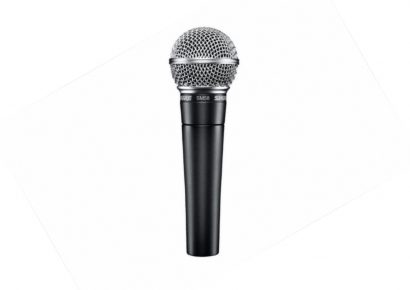Split the difference between these two studio mainstays.
It’s an old conversation, but how many people really understand the difference between dynamic and condenser microphones?
Choosing which type to go with will be one of the first choices made when selecting a microphone to use for live or studio performances, and ultimately that choice will be decided by personal preference, instrument choice and style of music.
While there are no catch-all answers, we can at the very least draw some broad conclusions in line with the traditional applications for both.
Summary
- Both dynamic and condenser microphones are commonly used within recording studios, but both bear distinctive sonic nuances due to their designs.
- Dynamic microphones can include both moving coil and ribbon microphones, with examples including the Shure SM58 and or Coles 4308.
- Famous condenser microphones include models such as the Neumann U-67, Røde NT55 and AKG414.
Read all the latest features, interviews and how-to columns here.
Dynamic Microphones
Dynamic microphones work by electromagnetically converting sound into an electrical. There are then two distinctive types of dynamic mics: moving coil, and ribbon.
Moving Coil
Moving coil microphones, such as the ubiquitous Shure SM58, are so commonly used that they are often broadly, and mistakenly, referred to simply as dynamic mics.
They are popularly used in live applications thanks to their robust build and the fact that they do not require any external power.
Moving coil microphones use a thin diaphragm, often made from Mylar plastic, attached to a coil or wire suspended in a magnetic field.
When sound waves cause the diaphragm and coil to move, a small electrical current is generated that is then amplified, basically operating like a loudspeaker.
Ribbon
Ribbon microphones are also dynamic microphones, though due to the fact that they are almost entirely used for studio rather than live use and that they sound entirely different to most moving coil mics, are generally thought of as a separate variety.
Ribbon mics use a thin strip of metal, usually aluminum, or film suspended between two magnetic poles. Unlike moving coil mics, ribbons respond to variations in the velocity of air particles rather than air pressure, creating an electrical current from those changes in velocity.
Ribbon microphones also create a much lower electrical voltage than other dynamic mics, and so, particularly with older microphones, a preamp is usually required to boost the output.
Ribbon mics are much more delicate than moving coils, and for this reason they are not usually a logical choice for capturing live sound.
They are extremely sensitive and are usually susceptible to damage from voltage spikes or being handled incorrectly.
However, because of their thin and delicate element, ribbons are able to capture fast transients, with a wide dynamic range, as well as being able to handle high sound pressure levels at high frequencies.
Consequently the sound they can capture is much more detailed than that of most moving coil microphones, hence their preference in recording situations.
Ribbon mics have a figure-8 polar pattern, capturing sound from the front and back, which also makes them ideal for recording situations, but not as useful for live shows where there is a lot of sound surrounding the microphone beyond what is intended to be amplified.
Examples of ribbon microphones are the Coles 4038 or the RCA 77DX.
Condenser Microphones
Condenser microphones use a thin diaphragm, usually made of mylar, though some older models use a thin metal foil, positioned close a solid metal plate.
The diaphragm reacts to the movement of sound waves and moves back and forth relative to the metal plate, thus fluctuating the electrical capacitance.
Condenser mics use a particularly sensitive capsule that has a high voltage output but an extremely small current, due to the fact the very little energy is stored in the actual capacitor.
Consequently, it uses an impedance converter to raise the level of current and requires phantom power. Some models, such as the Neumann U-67, require external power supplies, whereas some more modern versions utilise USB computer power.
Because the diaphragm is particularly thin and light they are able to follow the movement of the sound waves much more accurately than moving coil microphones, therefore offering a mode detailed and accurate reproduction.
For this reason condenser microphones have the best transient response and widest frequency response of all microphone types, as well as having a higher output and lower noise than dynamics.
Condenser microphones are categorised as either large or small diaphragm models. Small diaphragm models use a membrane that is smaller than an inch and are often shaped like a pencil, with the sound captured from the front.
Examples of this are the Neumann 184, Shure SM81 or Røde NT55. Large diaphragm condensers have membranes that are larger than an inch and capture sound from the sides, with examples being the AKG414, Neumann U-67 or U-87.
Check out our Reviews to find out more about the best microphones to use live and in the studio.













